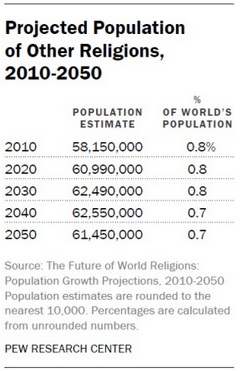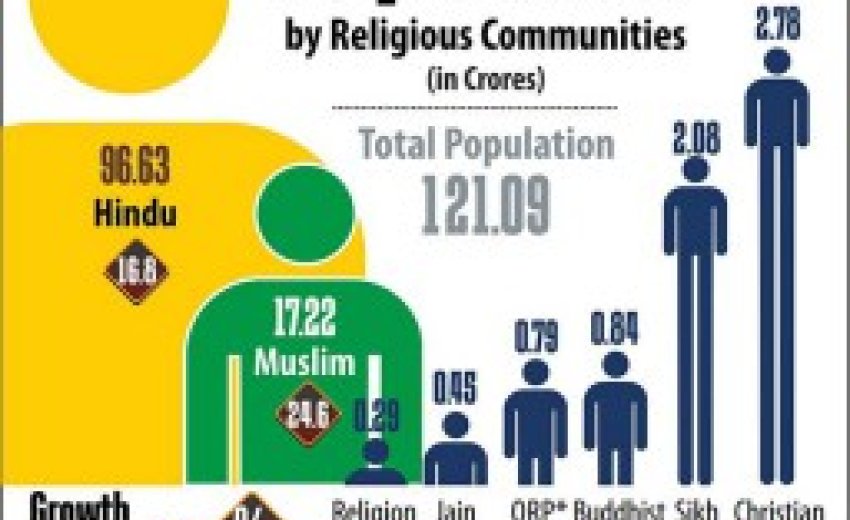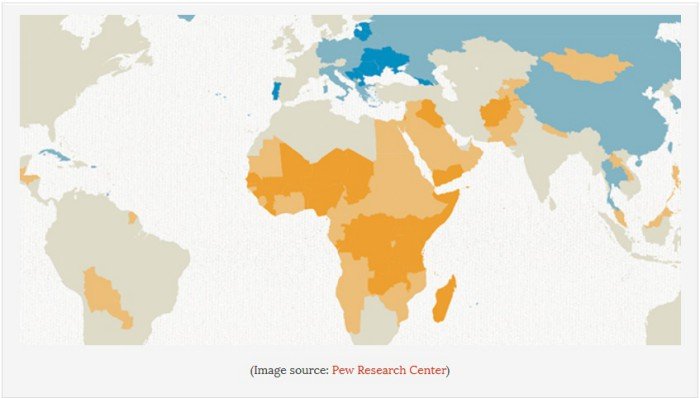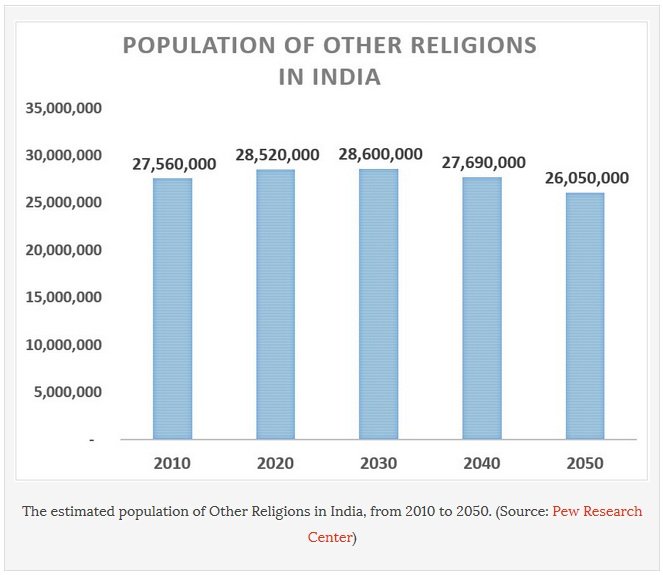
There could be more Sikhs in the future — maybe.
January 28, 2016The Pew Research Center’s report, The Future of World Religions: Population Growth Projections, 2010-2050, attempts to forecast the change in population among the world’s religions into the middle of the century. Largely a statistics exercise based on available census data around the world, the report makes some conclusions about changes in population among the world’s religions, stating that by 2050:
- “The number of Muslims will nearly equal the number of Christians around the world.
- Atheists, agnostics and other people who do not affiliate with any religion – though increasing in countries such as the United States and France – will make up a declining share of the world’s total population.
- The global Buddhist population will be about the same size it was in 2010, while the Hindu and Jewish populations will be larger than they are today.
- In Europe, Muslims will make up 10% of the overall population.
- India will retain a Hindu majority but also will have the largest Muslim population of any country in the world, surpassing Indonesia.
- In the United States, Christians will decline from more than three-quarters of the population in 2010 to two-thirds in 2050, and Judaism will no longer be the largest non-Christian religion. Muslims will be more numerous in the U.S. than people who identify as Jewish on the basis of religion.
- Four out of every 10 Christians in the world will live in sub-Saharan Africa.”
Unfortunately, due to the lack of available data from national census reports, the study is scant on details regarding Sikhs and a few other faith groups, grouping them into a catch-all “Other Religions” category. However, the Pew Research Center estimates the population of the Other Religions group to be 58 million people globally, and cites the World Religion Database in providing the population of Sikhs as 25 million around the world. Also interesting is that the report also estimates that up to 2.5 million Sikhs (less than one in ten) live outside of India.
The size and growth of the world’s Sikhs population is not addressed in depth by the report, but we can make some extrapolations from the report’s analysis. While not likely statistically valid, perhaps such an exercise can provide a directional view.
 If there are indeed 25 million Sikhs in the world, the population forms the largest portion (over 43%) of the Other Religions category, and thus the Sikh population might have greatest influence on the projected growth rates of this grouping. As such, we can take the overall trends of the Other Religions group and apply them to the estimate of the global Sikh population, assuming that the growth rate will not be too far off for this largest portion of the Other Religions.
If there are indeed 25 million Sikhs in the world, the population forms the largest portion (over 43%) of the Other Religions category, and thus the Sikh population might have greatest influence on the projected growth rates of this grouping. As such, we can take the overall trends of the Other Religions group and apply them to the estimate of the global Sikh population, assuming that the growth rate will not be too far off for this largest portion of the Other Religions.
Accordingly, as the world’s population of the Other Religions group is forecasted to grow from 58 million in 2014 to 61 million by 2050, applying the resulting growth rate to just the Sikh population would suggest that there would be over 26 million followers of the Sikh faith by the middle of the century. However, this simple calculation does not represent well the Pew Research Center’s prognostication that the Other Religions group will actually begin to decline in size in the years closer to 2050. It should be considered, therefore, that as the proportion of this group of the world’s total population would shrink by around 2040, we could see the same trend in the Sikh population.
In The Future of World Religions: Population Growth Projections, 2010-2050 report, the Pew Research Center also breaks out the population of the world’s religious groups by country. India would be of special interest in this analysis, given that most (“more than nine-in-ten” cited by the report) of the world’s Sikhs live in India, which equates to about 22.5 million Sikhs.
In the report, this Sikh population would again be captured in the Other Religions grouping for India, which is estimated at a total of over 27 million people in 2010 — again, Sikhs would therefore make the majority (over 80%) of this group. The forecast for Other Religions in India follows the same general trend as the global forecast, peaking by 2030 and then declining: The estimated population of Other Religions in India, from 2010 to 2050. (Source: Pew Research Center)
If the population trends of the Other Religions category in India can be applied to the Indian Sikh population — where the far majority of the world’s Sikhs live — then we can expect to see the same general trend. Looking out towards 2050, if the trend is consistent and the proportion of Sikhs within the category is consistent, it would appear that the number of Indian Sikhs in 2050 would be less than it was in 2010.
This may raise alarm bells for some, but it should be understood that this has been an informal statistical exercise performed on a large scale statistical exercise that seeks to look decades into the future. Not only are we lacking in collected data presently, but not all factors that might influence these numbers can be accounted for in such forecasts, especially one such as this that looks out over decades. However, it does give us some suggestion as to what the future might look like for the world’s Sikh population.
You can read the entire The Future of World Religions: Population Growth Projections, 2010-2050 report here.



